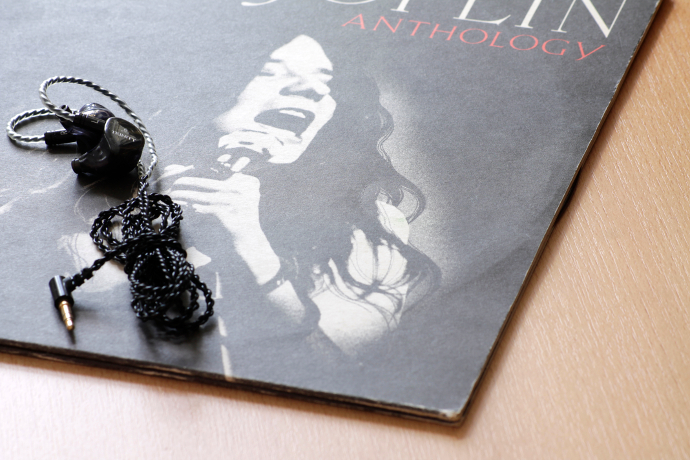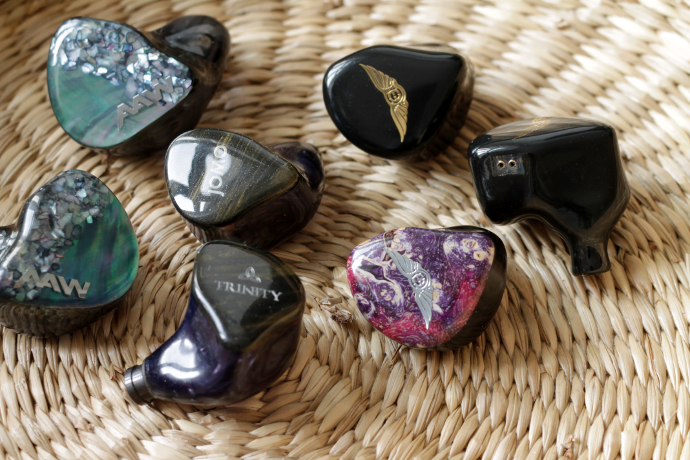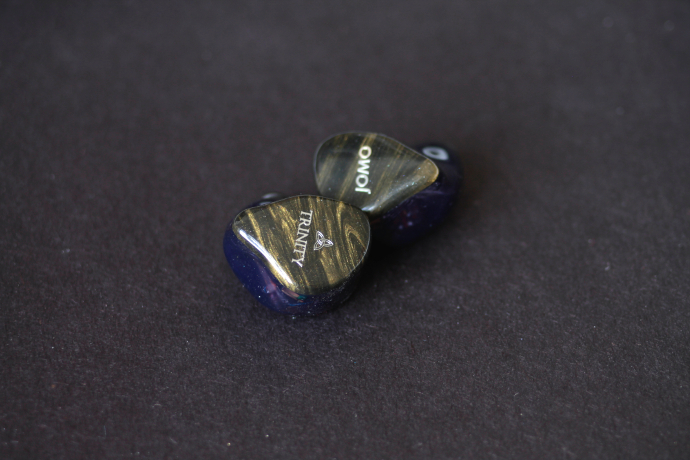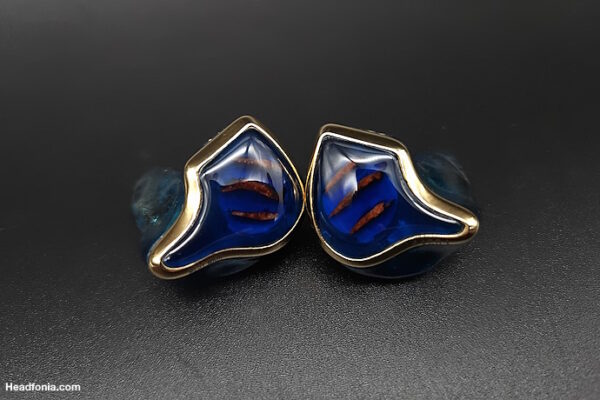Chord Electronics – Hugo2
The Hugo2 is probably one of the most-used items in my inventory. It goes well with almost anything I throw at it. Full sized headphones and In Ear Monitors both get their time with the British FPGA loaded DAC/Amp.
Trinity is well controlled in the lows. There is good punch in the bass, decent authority and nice texture. It reaches remarkably deep with nice rumble. Bass has good resolution and the typical dynamic driver air in it. Hugo2 does not change the fact that bass is more forward, but it keeps it a bit tighter bound than the Lotoo for example. Bass kept its slower speed and thick sound.
The sound stage spreads more into width with very nice left/right separation. Musicians and instruments are separated clear, but there is still room for improvement. You get a full sounding pairing, with good resolution and layering.
Hugo2‘s brighter signature really plays well with the Trinity in my opinion. You get a more pronounced top segment with higher levels of clarity and energy. It still won’t produce any uncomfortable amount of treble as it keeps its laid-back sound. However, due to the added amplitude of the top-end, you get more air in the midrange.
Mids sound more open than with other pairings. What I’m still missing is some extra emotions in male vocals. Even with the Hugo2 you won’t be presented much of them.
Woo Audio – WA11
The WA11 has more than enough power to drive Trinity to uncomfortable loudness. It has been built to run even demanding full sized headphones in the likes of the Abyss Diana Phi. Driving the Trinity is a piece of cake for the WA11.
You get a typical Class A sound fired into the Jomo, with analogue warmth. The WA11 knows how to handle a hybrid very well, and with the Trinity it’s no exception. Bass is well controlled with good body and thunder. It extends very well into sub-bass and brings in great rumble. If you like a tight and punchy bass, this might be your pairing. Bass still is very forward and puts the rest of the spectrum behind it.
With the Woo you get a more expanded sound stage and good layering. Imaging is done well, but the separation still needs some sharpness to me. The additional power of the WA11 also seems to be something the Trinity likes. The treble section is more alive, with better clarity and sparkle. This also results in more air in the midrange and more emotional vocals.

Jomo Audio Trinity
Comparisons:
According to Jomo, Trinity was the world’s first tri-level hybrid using Sonion’s electrostatic tweeters. Since then many flagships and new monitors have been released using electrostatic drivers. We have seen a good number of brands jumping in on the trend and trying to reinvent the market. In my personal collection there are only four models, including Trinity. I will make comparisons to some of them, but we will also see Trinity compared to other non-electrostatic IEMs.
A few years ago, our world has seen companies trying to squeeze in more and more drivers into the tiny shells. The so-called driver-wars have been over and a new competition has started. The IEM makers are now in some sort of e-stat race, trying to push this new technology.
I can only compare Trinity to what I have at home, and while I’d love to do a comparison to the other Trinity flavours, I can’t. I won’t ever do comparisons based on short-term or show listening experiences. These are far from credible in my books.
All mentioned prices are for the universal versions and in US Dollar. I have exclusively used the stock cables for this section.
Advanced AcousticWerkes – Canary (2DD/4BA/2E-Stat; 2,199$)
Like Jomo, AAW is also from Singapore. Both models feature a tri-brid design, although AAW did put in an additional dynamic driver for lows. Canary and Trinity are alike in a few things, but differ noticeably in others.
Jomo’s Trinity has a more forward bass tuning, it punches harder and goes deeper into sub-bass. AAW’s Canary is smoother, a bit calmer and overall more organic sounding. Canary wins to me when it comes to richness in the lows, they sound meatier and have more flesh on their bones. Both Canary and Trinity seem to have the same levels of resolution in the bass segment. Trinity has more rumble in the sub-bass region, while Canary is more even throughout its entire bass frequencies.
Mids are again smoother on Canary than on Trinity. The Jomo sounds considerably warmer and thicker. Canary puts more air in the vocals and around instruments. The AAW has better and sharper instrumental separation with superior imaging. It creates a bigger stage, but isn’t amongst the tallest or widest either.
The AAW is cleaner, more precise and a touch more realistic to me. It puts more energy in the treble section and appears to be more agile too. Canary also is not the most energetic or fast monitor in its highs, but it still bests the Jomo.

Jomo Audio Trinity
Empire Ears – Wraith (7BA/4E-Stat; 3,499$)
Empire’s latest flagship is very different to Jomo’s Trinity. It features a cleaner and clearer sound that brings unprecedented levels of resolution to the table. Wraith has a darker background, creates a bigger sound stage and separates instruments like no other monitor.
Trinity has a fuller bass and midrange section. Bass is something the Wraith is not well known for. It’s light and nowhere near the weight and body of Jomo’s flagship. Given the different driver technologies used, it’s understandable they can’t compete here.
Mids on Wraith sound faster, cleaner and more precise. The Empire monitor renders its pictures with higher accuracy and resolution. Wraith is a monitor that I consider to be the best when it comes to controlling the scene. Everything stays put, no matter how complex the construction seems to get. Wraith to me is more potent on technical levels, while Trinity might come out as top dog when it comes to warmth and body.
Trinity extends deeper into lows, while Wraith does go considerably higher. Wraith creates a more holographic sound, that appears more out of your head, while Trinity keeps everything closer to your ears.
Read more comparisons on the last page!







